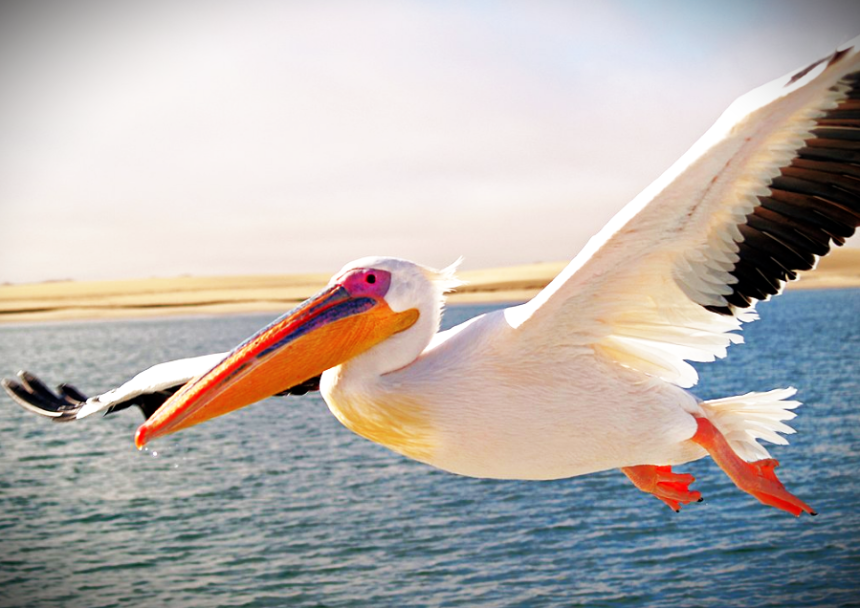Pelicans are among the most distinctive and fascinating birds in the avian world. With their massive wingspans, oversized beaks, and graceful flight patterns, these birds captivate both bird watchers and casual observers alike. In this guide, we will explore everything you need to know about peli cans, from their physical characteristics and habitat to their behavior, diet, and conservation status.
What Are Pelicans?
Pelicans belong to the family Pelecanidae, a group of large water birds best known for their long beaks and distinctive throat pouches. These pouches are primarily used to catch and drain water before swallowing their prey, which mainly consists of fish and other aquatic creatures. There are eight species of peli cans found around the world, and they inhabit a range of environments, including coastal regions, lakes, and rivers.
Species of Pelicans
There are eight recognized species of peli cans, each with unique characteristics and habitats:
- American White Pelican (Pelecanus erythrorhynchos)
Found in North America, this species is known for its striking white plumage and black wingtips. - Brown Pelican (Pelecanus occidentalis)
Common along the coastlines of the Americas, this pelican is known for its diving capabilities, plunging into the water to catch fish. - Great White Pelican (Pelecanus onocrotalus)
This species is native to Africa, Europe, and Asia and is recognized for its massive size and pale coloration. - Dalmatian Pelican (Pelecanus crispus)
Native to Europe and Asia, this species is one of the largest peli cans, with a wingspan that can exceed 11 feet. - Australian Pelican (Pelecanus conspicillatus)
Found in Australia and surrounding regions, this species has the longest bill of any bird, reaching up to 20 inches in length. - Peruvian Pelican (Pelecanus thagus)
Native to the coasts of South America, this species is slightly larger than the Brown Pelican and is commonly found along the Peruvian and Chilean coasts. - Pink-backed Pelican (Pelecanus rufescens)
Found in sub-Saharan Africa and southern Arabia, this species has a pinkish hue on its back, which distinguishes it from others. - Spot-billed Pelican (Pelecanus philippensis)
Native to southern Asia, this species is smaller than other peli cans and has a distinctive spot on its upper mandible.
Physical Characteristics of Pelicans
Pelicans are known for their imposing size and unique features. These birds can have wingspans ranging from 8 to 12 feet, depending on the species, making them among the largest flying birds. Their beaks, particularly the throat pouches, are their most defining characteristic. These pouches can hold several gallons of water, allowing them to scoop up fish and drain the water before swallowing their catch.
Beaks and Throat Pouches
The throat pouch is an elastic membrane that expands when pelicans catch prey. Despite popular belief, peli cans do not store fish in their pouches for long periods. Instead, they use the pouches to trap fish before tilting their heads to drain out the water and swallow their prey whole. This efficient hunting method is a key reason why peli cans are such successful predators in their environments.
Flight and Movement
Despite their size, peli cans are remarkably agile in the air. They use thermals, or rising columns of warm air, to soar and glide for long distances with minimal effort. Their large wings and light bones enable them to fly gracefully and efficiently. Peli cans are also strong swimmers, using their webbed feet to propel themselves through the water when searching for food.
Pelican Diet and Feeding Habits
Pelicans are primarily piscivorous, meaning their diet consists mainly of fish. They hunt by plunging into the water from great heights or scooping up fish while swimming. Brown Peli cans, in particular, are known for their dramatic diving behavior, while species like the American White Pelican work in groups to herd fish into shallow waters before scooping them up.
Fishing Techniques
Pelicans use various methods to catch fish, depending on the species and their environment:
- Plunge-diving: Brown Peli cans use this technique, where they dive from the air into the water, using their momentum to catch fish in their pouches.
- Surface scooping: Species like the American White Pelican swim along the surface of the water, scooping up fish and draining out the water through their bills.
- Cooperative hunting: Some pelican species work together to drive schools of fish into shallow areas, making it easier to catch them.
Their diet isn’t limited to fish; peli cans may also eat crustaceans, amphibians, and occasionally small birds or mammals, depending on availability.
Pelicans Behavior and Social Structure
Pelicans are highly social birds and are often seen in large flocks. They live and travel in groups, which provides them with protection and helps them hunt more effectively. Many species of peli cans are also seasonal migrants, moving to warmer climates during colder months.
Nesting and Reproduction
Pelicans build their nests in colonies, often on islands or remote areas near water. Their nests are typically made of sticks, grass, and other vegetation. Both male and female peli cans take part in building the nest, incubating the eggs, and feeding the young. Depending on the species, peli cans may lay between 1 to 3 eggs per clutch, which hatch after an incubation period of 30 to 36 days. Once hatched, the chicks are fed regurgitated fish by their parents until they are ready to fend for themselves.
Habitat and Distribution
Pelicans are found on every continent except Antarctica, with most species inhabiting coastal regions, lakes, and rivers. They prefer warm climates and are often seen near bodies of water rich in fish. Species like the Brown Pelican are commonly found along coastlines, while others, such as the American White Pelican, prefer freshwater lakes and rivers.
Conservation Status of Pelicans
While many pelican species have stable populations, some are facing threats due to habitat loss, pollution, and overfishing. The Brown Pelican, for instance, was once endangered due to pesticide pollution but has since made a remarkable recovery thanks to conservation efforts. However, other species, like the Dalmatian Pelican, are still considered vulnerable due to habitat degradation and human disturbance.
Conservation Efforts
Efforts to protect pelicans include habitat preservation, protection of breeding grounds, and regulation of fishing practices to ensure sustainable fish populations. Oil spills also have an impact on peli cans, which can weaken their feathers and decrease their ability to float in the water. Conservationists work to minimize these threats through environmental regulations and public awareness campaigns.
Fascinating Facts About Pelicans
- The Australian Pelican holds the record for the longest bill of any bird, with a length of up to 20 inches.
- According to fossil records, pelicans have been around for over 30 million years.
- The Brown Pelican is the state bird of Louisiana and is known for its resilience and recovery from near extinction.
Conclusion
Pelicans are among the most majestic and resilient birds in the natural world. Their unique adaptations, such as their remarkable beaks and cooperative hunting techniques, make them fascinating subjects of study. However, like many other wildlife species, they face challenges due to human activities and environmental changes. Protecting pelicans and their habitats ensures that future generations can continue to admire these incredible birds.



